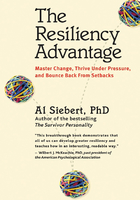BUILDING A TEAM AND KEEPING IT TOGETHER
I am going to act and believe that if we all work together and do our best, that something can happen. Not because I see it happening, except in small ways, but because I know it can.
PATCH ADAMS
MOST OF THE public problems that cry for solutions today are complex and time-consuming. While change efforts are usually started by one or a few motivated people, long-term progress usually requires more than that. And it isn't just the additional help that's important. Given the power of the forces any citizen activist may confront, it's simply too easy for one person to be marginalized. If you're pursuing a cause by yourself, sooner or later those opposed to change are going to ask, if this is so important, why is she the only one making noise? Why don't we just ignore him?
But simply collecting a large number of willing people isn't enough. The work these people do has to be focused and coordinated. There has to be a team.
A team is more than a group of people sharing a common goal and working together to achieve it. A good team is an effective structure for planning, making decisions, coordinating efforts, and bringing power to bear. A good team is synergistic—members motivate each other, build on each other's strengths and compensate for weaknesses, share the heavy lifting, and cross-fertilize ideas.
Teams can be parts of larger groups, such as the committees of an organization or association, or they can be formed from scratch, to carry out new projects. Many of the functions and attributes of a team are also important for official or semiofficial bodies, such as planning commissions or citizens' advisory groups.
Teams are important, of course, in business and government, from IBM to NASA. Much of what's in this chapter is relevant to those worlds too.
USER'S GUIDE
The opening section of this chapter is about taking groups of people who share a common concern and turning them into teams. It's addressed principally to the citizen activist seeking to build a team around a new initiative, or to build a new committee or work team within an already established organization. If neither of these conditions applies to you, then you might want to skip this section.
If you do need to build a team, then apply what you need from this first section to fit your situation. If your effort is going to be large, long, and complex, then your team building will take time and effort. If all you want to do is round up a few of your buddies to help with a simple task, then what's here is overkill; your team building can be informal and minimal. Most projects are someplace in between.
HOW TO BUILD A TEAM FROM SCRATCH
The key is getting the right people.
■ Create the Core
The first step in building a team is to find a few people who enthusiastically share your motivation and mission, and whom you trust and get along well with. They become the core of the team, and their first job is to recruit the members of a larger team that will actually do the work. Team leadership at this stage is informal, and decisions are collegial. You may be the one who calls and chairs the initial meetings, but the longer-term leadership of the team is not a decision to be made at this stage.
■ Choose Team Members Carefully
It's assumed that by now you've got a good idea of the scope of the problem you're taking on and of the project needed to solve it. Now your core team needs to translate this information into an estimate of how many people—and what kinds of people—you need to help get the job done.
A good team can be more than the sum of its parts—but only if it has the right parts. Just filling the chairs is not enough. Include people representing a fair cross-section of any groups and organizations whose advice and support you know you will need. If your project has to do with combating violence or substance abuse in your children's school, for example, then teachers, administrators, parents, cops, and kids should be represented.
Include people with the skills, experience, and contacts you think the team will need. Does it need a lawyer, for example, or a publicist or someone with fund-raising experience? You wouldn't start a business enterprise with a key skill missing; the same reasoning applies to a volunteer project.
Begin your recruiting by approaching people who are already known to members of your core group, and who perhaps have already listened sympathetically to your concerns. It's unlikely, however, that you'll find the people with all the qualifications and contacts your team needs just in that initial circle of friends. Expand the search to people recommended by these friends, and then to others you think are likely to share your concerns about the problem. Finally, consider organizations, such as local service or cause groups, or local leadership development programs whose aims are close to yours; they might be sources of team members with the right affiliations and skills.
Steer clear of people whom you know from good experience are overly difficult to work with. Affiliation, skills, and experience aren't everything.
image
Confronting the need to counter out-of-control development, those of us who started the Island County Citizens' Growth Management Coalition recruited part of our initial team from the five most active environmental groups in the county, as well as from two local chapters of statewide environmental groups that shared our concerns.
We focused our other recruiting efforts on people with the skills, experience, and contacts in areas important to solving our problem. For us, that meant research, environmental law, media, fund-raising, writing, and public speaking. We found all but one of those skills locally—we were not able to recruit an environmental lawyer, so we had to hire one in Seattle to help us shape our legal positions.
By carefully choosing our team, we not only greatly expanded our capabilities, but we also signaled to the opposition that we meant business, and almost overnight we became a formidable force in shaping county land-use policies.
TEAM STRUCTURE
Nobody wants more structure on a team than is necessary. If overdone, it stifles both energy and creativity. But the need for structure grows with the size and complexity of the work. It's crucial, early on, for the team to reach agreement on the five elements listed below, hopefully by consensus:
leadership
internal communications
external communications
decision making
record keeping
The agreement doesn't have to be signed in blood, but it should be formally written down in some form of minutes or bylaws that all agree to. Not to address these elements invites conflict, inefficiencies, and chaos (see the case study on page 53).
■ Leadership
The question of who will lead the team is important. Even more important, however, is the form of leadership the team needs and wants.
image The key concern any team must address head-on and early is how much authority it is comfortable giving to its leader.
Will the leader's roles and responsibilities be limited to calling and chairing meetings? Or does it make sense in your team's situation to give the leader broader powers to make decisions and to represent the entire team to others?
However much formal authority the team decides to give its leader, my experience is that it's important to allow the leader reasonable flexibility. In a crisis or other fast-breaking event, you should want your leader to have more authority to make decisions than in less stressed times—there simply may not be time to talk through all the options with the whole team. So the leader needs to be someone the team trusts to use and not abuse this privilege.
At this early stage, it's also important for the team to decide how leadership will be elected and how it can be changed, which includes setting terms of office.
Who will be the leader? Often it will seem natural and effective to choose as leader the spark plug who brought the core team together. But sometimes that person doesn't want the job, or there's consensus that somebody else on the team might be better suited. Sometimes, as in the case of Giraffe Louise Stanley, leadership emerges spontaneously (see sidebar, page 50). Unfortunately, given the time and effort that leadership requires, the question often comes down to who is willing to do the job. If that's the case, the best option may be to spread leadership responsibilities among several people who work well together.
■ Internal Communications
Good team communications are crucial—team members must have the information needed to do their jobs, including background facts, logistics data, and breaking news relevant to the team's work. They also need to know broadly what each other is doing, so that they can better coordinate the work.
The Internet is the quickest and most effective way for team members to communicate with each other.
image Consider setting up a password-protected electronic bulletin board or newsgroup and then tasking team members to log on in a timely way, especially if the project is fast moving.
■ External Communications
Who will speak for the team to outsiders, including the press? While the team as a whole may decide the policies that then need to be communicated, it's important to limit the number of people on the team who are authorized to deliver the message. This is not just to take advantage of your most articulate speakers, but it's also to minimize the chances of delivering mixed or contradictory messages.
■ Decisions
The team must agree on a clear, unambiguous process for making decisions: who gets to make them—and how? Consensus is a good goal to shoot for, but to avoid gridlock when consensus fails, set up a voting mechanism. Decide how many members of the team are needed to form a quorum, and how many votes are needed for approval. It's common to use majority rule for most decisions but to require a supermajority (60 percent, for example) for the most important ones—such as on spending a large amount of money, entering into a long-term contract, or initiating or joining a lawsuit.
Evelyn Schaeffer, who took on the phone company in Ohio (see chapter 2), offers the following tip for making team decisions. Frankly, I've never done it this way, but what she says makes sense: “The rock-bottom rule I never broke was to always ask after every decision, ‘Is there anyone who can't live with this?’ It's amazing how you can have an acrimonious split decision on something, but if you ask that question, the minority will usually say, ‘I guess we can live with it,’ and hostility is defused. Of course, if on rare occasions there is someone who says, ‘I can't live with it,’ then I go back to the drawing board with the caveat that if we reach the same decision, that person may have to bow out.”
■ Record Keeping
Keep minutes that record attendance at every team meeting, accurately describe any decisions made, and give a balanced summary of the discussions. One option is to keep notes during the meeting on a flip chart where everybody can see them, and then to write up the minutes from these. However they are prepared, minutes should be sent out for approval as soon after a meeting as possible, while memories are fresh.
If you plan to raise and spend any money at all, create a separate bank account in the team's name. Never use your personal account to transact team business; that can create financial snarls and invite criticisms you don't need. Scrupulously record all transactions.
If you figure your team will be around for a while, you may want to incorporate in your state as a nonprofit corporation (see “Resources”) and then apply to the Internal Revenue Service for tax-exempt status so that you can offer a tax deduction to the financial backers you will need. Try to find a lawyer who'll file the applications for free.
If you don't have your own nonprofit status and want to be able to offer tax deductions, often you can find a like-minded tax-exempt organization in your area that will let you, for a fee, operate (and receive tax-deductible gifts) under its legal umbrella.
image There's a strong temptation to avoid or delay creating the structure an organization needs because what the group is doing is so important, and it's moving so quickly that there just isn't time to “do all that paperwork.” I know this mistake because I've made it myself. I finally learned better (see below).
image
When we formed the Island County Citizens' Growth Management Coalition, we knew that we represented interests and approaches on land use and environmental protection that went from far left to center. When we took on the entrenched Island County commissioners over land-use policies, the situation was so pressing that our individual differences were quickly buried and we had no problem coming up with a shared vision for our work and with an overall strategy for what to do and how to do it. We operated well within a loose, informal framework with a decision-making process that was murky at best.
The problems came when we started winning, and the do-or-die tensions of our fight with the county lessened. As we sought to fine-tune our successes, individual differences among the coalition's members and member groups became more and more prominent—and we had virtually no structure to deal with them. Bruised by months of internal wrangling, the coalition finally had the sense to step back and spend two months producing a set of operating procedures we should have produced two and a half years earlier. By skipping this key step in our haste to deal with a crisis, we'd ended up almost imploding just as victory was in sight.
TEAM MANAGEMENT
The most important and most difficult aspect of managing a team is dealing with the people on it.
■ Focus on Relationships
How people get along can be crucial to the success of any team effort, especially if the task you've taken on includes stress-producing conflicts or obstacles. The minimum goal is to create working relationships good enough to promote open discussion and ready cooperation.
If all the members of your group don't know each other at the outset, spend whatever time it takes at the first meeting—or set aside a special time—for everyone to get acquainted. Suggest that people share not just the usual biographical information but also the reasons why they're there, and whatever expectations, concerns, and questions they may have. As the project goes on, regularly schedule “people” time—pizza out, a ball game, a potluck with the kids, a celebration for a job well done—anything that brings team members together in an atmosphere that's informal and relaxed. If you've got the time and resources, a team retreat can help deepen connections.
image It's important that members be as comfortable with each other as possible. But it's even more important that they trust each other to contribute to the work of the team.
Chapter 3 focused on building trust with opponents or potential opponents. It's also vital to build trust among the people on your side. Mutual trust keeps a team motivated and moving forward. It improves coordination and communication. It makes the work more fun. It helps the team weather obstacles and disappointments.
Trust also provides a healthy framework for dissent, so that contrary opinions are given fair hearing. Good teams are never made up of robots, and the team vision, strategies, and goals are products of contributions, discussions, and even arguments. Members of a good team trust each other enough that when they do disagree, it's in the context of a shared commitment that holds them together even in dissent.
The ultimate goal is to create a team bond that allows many people to move almost as one; individual needs and priorities are not forgotten, but they're willingly subordinated to those of the team. That level of bonding is an ideal. Certainly it isn't always possible, but when it does happen, a team can be an almost magical enterprise, making the total effort of its members more than the sum of what each of them could do alone.
Chapter 3 suggested ways of building trust. Competence counts; if everyone on the team is qualified to act on the problem you've taken on, you're going to trust each other more to make a useful contribution than if you were all beginners. You can increase competence on your team by making sure that everybody has the information and training they need. Taking extra time in the beginning for this prep work will pay rich dividends when your project is in full swing and there's no time to stop for remedial training.
Accountability and honesty build trust—knowing that your teammates will do their jobs, especially when things get tough, and that they will tell you the truth, even when that might be difficult.
Respect for teammates' differing backgrounds, priorities, needs, and styles is important, too—especially if any of those elements in a teammate make you uncomfortable.
But, as mentioned earlier, the critical factor in building trust is caring. Working on a team whose members care for each other not only makes the work more enjoyable, but it also builds the trust within each person that the others appreciate and will act for the good of the group and its mission. Uncaring or selfish behavior has the opposite effect; teammates are reluctant to trust anyone they see acting only in his own interests, even on small things; they fear that in a crunch he'll just take care of himself. That view could make a difference in how the team performs, especially if it suddenly has to deal with a stressful issue.
image Ever been on a team with someone who seemed constantly focused on her own needs, never going out of her way to help others? What about the opposite experience of working with someone who was always helpful—doing small favors, for example? How did these different attitudes affect the trust you and others put in these people? How comfortable were you working with each of them? Was there any effect on how the team performed?
Find ways to encourage caring actions on your team, and model them yourself. If you've got loners along who want to stay that way, that's fine. But every team member can be encouraged to share personal stories, listen to others, do small favors, and honestly share concerns. All of it helps. Others pick up on these examples, and as they do, trust expands among the entire team.
■ Match the Right People with the Right Tasks
What people volunteer to do will often be a good guide, although of course it's also important to make sure that each person has the skills and experience needed to do the job. Matching new people with more experienced people on the team both ensures the quality of the work and provides on-the-job training. That's how the Giraffe organization Global Volunteers does it (see sidebar, page 56).
image It's useful for team members early on to talk to the whole team about what they see as their primary strengths and interests. This not only helps guide the distribution of tasks, but it also makes each person feel valued, it will prompt shy members to contribute, and it will help the more compulsive members to relax, knowing that they don't have to know or do everything.
If you're leading a team, try to rotate the toughest and most time-consuming jobs within the group to give people breathers when they need them. Also, delegate authority to others as much as you can. Delegating not only takes some of the load off the leader, but it also builds teamwork: when people know they're integral to the action, their commitment to the enterprise and to the team grows.
image Delegate authority only when it's clear that the person you're delegating to has the necessary skills and commitment. Don't ask the most tongue-tied member of your team, for example, to sub for you in giving a speech to the city council.
■ Recognize and Act Early on Potential Problems within the Team
Spend enough time at your first team meeting making sure that everybody understands what he or she is getting into. A brief review is good insurance. It's like when the pilot announces your destination before they close the main cabin door. I've yet to see some red-faced soul bolt for the door—but I'm sure it's happened.
Especially if you're in a position of leadership, be on the lookout for the kinds of little frictions and mistakes on your team that can grow into big trouble later on. Is any team member weaker in needed skills than you thought? Are those snide remarks between Terry and Jerry going to build into a nasty fight just when you need people to pull together? Could Simon's gung-ho optimism lead him to underestimate risks?
If you're alert for warning signs like these, you or other members of the team can take preemptive actions that will reduce the chances for real problems later on. You might, for example, reassign responsibilities among team members, try to mediate disputes before they get out of hand, or offer a private word of coaching or advice. You may not end the problems, but by addressing them early, you and the team will at least have a better chance to lessen them and/or compensate for their effects.
CREATE AND COMMUNIC ATE A TEAM VISION OF SUCCESS
Chapter 2 described why visions are important and how to create one. Visions are especially important for teams—there's a special synergy generated when all team members have put their pictures of intended results into a single vision of what they'll achieve together. Teams that don't have a common vision, or whose vision is mushy or incomplete, are more likely to bog down in confusion and conflicts over problems that should be minor.
Your team will work harder and better if it's guided by a vision that all members have helped create. As members contribute to a team vision—each adding his or her own pictures of success—the vision tends to get stronger and clearer; individuals increase both their sense of responsibility for it and their commitment to attaining it.
Use the visioning exercise described in the section “What's the Vision for Your Project?” in chapter 2 with the team. If you're leading the exercise, remind everyone that visions are intuitive, not intellectual: to create a vision, team members must give themselves the freedom to imagine what does not yet exist. Urge team members to add to or refine what others have said, and to contribute new pictures. Combine and condense the pictures into a short vision statement that will guide the team's subsequent planning (see chapter 5).
Getting team members to be visionaries isn't always easy. Some people have never seen themselves in that role and aren't comfortable with it. If it helps them to relax into it, don't use the word vision at all—simply ask people to join you in creating “pictures” of what the team wants to achieve: “What does it look like when we're done?”
You may have to get things started by describing your own pictures of what's to come. Make those pictures so clear and so compelling that your listeners are drawn into them and can see what you see, hear what you hear, feel what you feel. Communicating your vision this way not only creates a model, but it also encourages people who might otherwise be reluctant to be visionaries, too. Many people will overcome their hesitations when they see you going first. And once into it, they'll start to feel the same excitement you do, and the process can take off.
Some team members may be so impatient to “get on with the important questions” of strategies and tactics that they will want to roll right by the vision-setting process, especially if time is short. Resist that temptation and you'll save much frustration and disappointment down the line. Assure the impatient ones that setting goals and strategies is the next step in the planning process.
image Successful teams make the investment of time and energy to develop a shared vision, one that's both a guide for planning and a source of energy and cohesion.
A GIRAFFE STORY
Louise Stanley
Brooklyn's East New York section used to be a good place to live. In 1967 Louise Stanley became a proud home owner there, working at the post office and raising her six children. But the area began to deteriorate, and after years of neglect, many buildings had been abandoned or even torched. Vacant lots had turned into trash heaps. Drug dealers were taking over the empty buildings. In a city where good, affordable housing is practically a myth, Louise Stanley couldn't stand seeing buildings empty.
Remembering when the neighborhood was friendly and open, she yearned to get rid of the criminals who had moved in. So Stanley attended a meeting of ACORN (the Association of Community Organizations for Reform Now). She'd gone intending to listen, but she soon found herself raising her hand, speaking her mind, and volunteering for assignments. A few weeks later she was leading the first East New York ACORN group.
Within two years Stanley and her ACORN group had organized a community of people to reclaim and renovate abandoned buildings in the neighborhood. Families moved into empty city-owned buildings. Neighbors provided power and water. Volunteers like Stanley worked with the families on rehabbing the buildings.
City Hall had the new residents arrested. Stanley, by then a savvy activist, was pleased. She alerted the press, and the resulting furor put the city on the defensive. Here were poor people fixing up abandoned apartments, and the city was arresting them?
Stanley negotiated with the city, and a deal was struck. ACORN agreed not to break into any more buildings. The city agreed to set up the Mutual Housing Authority of New York to give abandoned housing units to community groups for rehabilitation. The city also provided $2.7 million to buy renovation materials for 58 buildings. Not a bad result for a novice organizer. Stanley says, “The bottom line is getting people to realize that success is possible.” That's leadership.
Louise Stanley had no idea she'd end up leading a movement that would reclaim a good hunk of East New York from urban decay. For her, as for many Giraffes, leadership “happened.” When she found herself in the middle of an issue she cared a lot about, she rolled up her sleeves and went to work, becoming a leader along the way.
Web link: ACORN (www.acorn.org).
A GIRAFFE STORY
Global Volunteers
Global Volunteers has been called a “mom-and-pop Peace Corps.” That makes Michele Gran “Mom” and her husband, Bud Philbrook, “Pop.” Indeed, the idea for Global Volunteers was conceived on their honeymoon.
The couple, who lived in St. Paul, Minnesota, were already booked for a honeymoon cruise when Gran had a change of heart. She wanted a more meaningful beginning together. Philbrook had participated several years earlier in a community-development project in India, and he knew of a similar one in Guatemala, so the couple spent their first week of married life in a Guatemalan hut, working all day on community projects. When they returned to St. Paul, they found that—thanks to a newspaper article about their unusual honeymoon—other people wanted to know about traveling to serve. “People were coming up to me and saying, ‘I've always wanted to do something like that, but the Peace Corps is too long a commitment,’” says Philbrook.
Philbrook, an attorney and former state representative, and Gran, who holds a master's degree in international communications, decided to bring average people together to do cross-cultural community development around the world. Global Volunteers was born.
The nonprofit organization recruits North American volunteers, who pay their own travel and living costs to work a few weeks far from home. U.S. volunteers don't show up and start directing the action; they join teams directed by community leaders. Gran and Philbrook explain to volunteers that they're going to work with and learn from their hosts, as a one-person-at-a-time way of waging peace. Much of Gran and Philbrook's work is in identifying communities that can use help and working with the communities' leadership.
Supported entirely by Gran and Philbrook, Global Volunteers operated in the red for years. The couple has faced bankruptcy more than once; their home has been collateral for the organization's credit rating. While they've coped with economic worries, Philbrook and Gran have also had to contend with the opinion of some foreign aid professionals that they were “idealists stuck in the ‘60s.’”
Undaunted, Gran and Philbrook are waging peace today with as much passion and conviction as ever. With Global Volunteers now in its 20th year, it's gone from one project that sent 9 volunteers to Jamaica, to mobilizing more than 13,500 volunteers on community-development projects worldwide, touching hearts and changing lives in 20 countries.
Web link: Global Volunteers (www.globalvolunteers.org).
image
A good team is an effective structure for planning, making decisions, coordinating efforts, and bringing power to bear. A good team is synergistic—members motivate each other, build on each other's strengths and compensate for weaknesses, share the heavy lifting, and cross-fertilize ideas.
The first step in building a team is to find a few people who enthusiastically share your motivation and mission, and whom you trust and get along well with. They become the core of the team, and their first job is to recruit the members of a larger team that will actually do the work.
Choose team members carefully. Include people representing a fair cross-section of any groups and organizations whose advice and support you know you will need. Include people with the skills, experience, and contacts the team will need to reach its goals.
It's crucial, early on, for the team to reach agreement on the following:
Leadership. What's important is not just who will lead the team but also the form of leadership the team needs and wants.
Internal communications. Team members must have the information needed to do their jobs, including background facts, logistics data, and breaking news relevant to the team's work.
External communications. Who will speak for the team to outsiders, including the press?
Decisions. The team must agree on a clear, unambiguous process for making decisions: who gets to make them, and how?
Record keeping. Keep accurate minutes of meetings. Scrupulously record all financial transactions.
Focus on relationships. How people get along can often be crucial to the success of any team effort.
It's important that team members trust each other to contribute to team goals. Competence, accountability, honesty, and respect help build trust within a team, but the crucial factor is caring for the people you're with.
Match the right people with the right tasks. If you're leading, delegate authority to others as much as you can.
Recognize and act on potential problems within the team early.
Create and communicate a team vision of success.
WHAT'S NEXT? You'll be in a mess without a good plan. Chapter 5 shows you how to create a plan to carry out your project, and how to put that plan into action.













